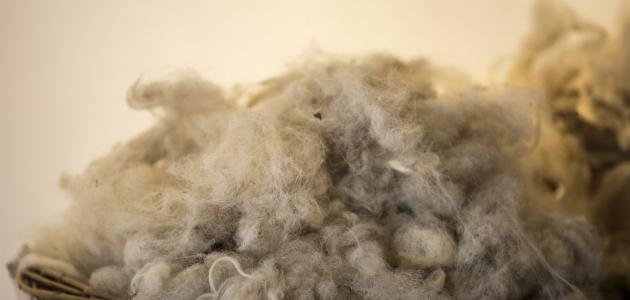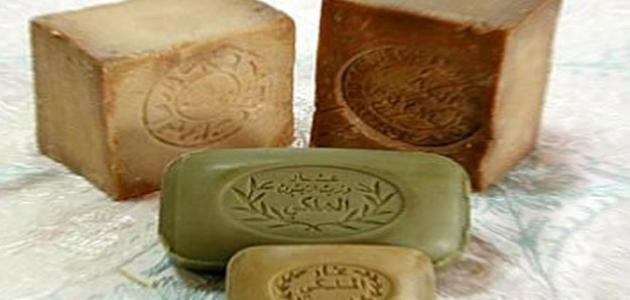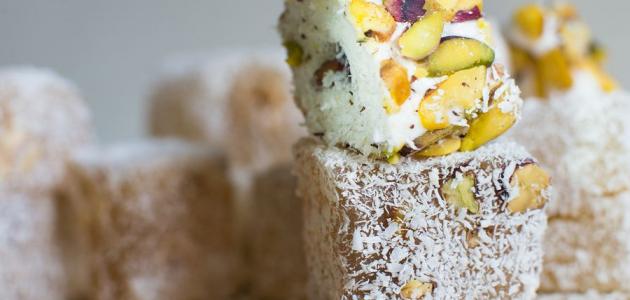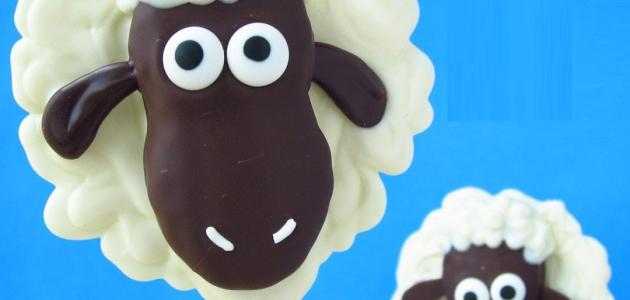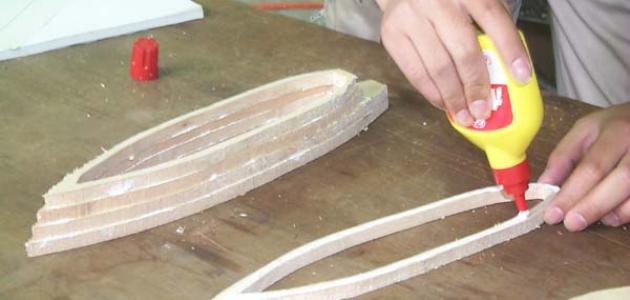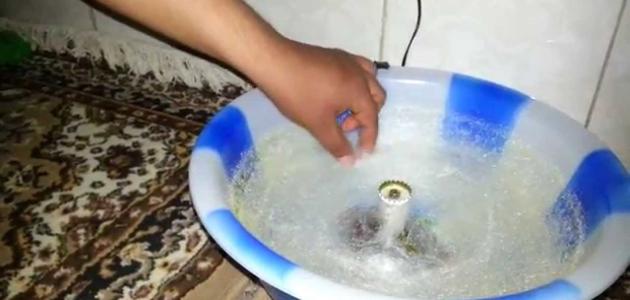wool
Wool is an animal fiber that represents the protective layer of hairy mammals (in English: Hairy Mammals) such as sheep, goats and camels, and man has used wool since ancient times to clothe himself, as he made from it a fabric that he used in the clothing industry, as it was made from wool Carpets, blankets, and other products. Woolen textiles maintain their splendor and beauty as they resist shrinkage, are easy to clean, and are able to absorb moisture. Wool is heat and cold insulator. All these qualities made it the best choice for making jackets, coats, socks, gloves, and more.
The wool fibers are almost cylindrical in shape, and they are sintered to be able to resist and endure and to increase their cohesion; This is done by forming a surface layer on it due to heat, pressure and moisture. There is a law that obliges every country that produces woolen clothes to put a mark on it to indicate the degree of purity of the wool, and put a guiding mark to define and classify woolen products. Other fibers taken from multiple sources, such as alpaca, are included in the wool. , which is a type of woolen fiber taken from the alpaca animal, which is a type of llama, and there is camel hair, and cashmere that is taken from cashmere goats, and mohair whose main source is Angora goats, and raw wool is exported from many countries of the world in large quantities, such as Australia and China , Argentina and New Zealand.
Wool is one of the main clothing fibers that can be recycled and reused, as it can be turned into clothes, upholstery, or the manufacture of products that are resistant to extreme heat. Wool can also be used in many matters of thermal and sound insulation, or in the manufacture of special pillows to absorb oil in the event of leakage. Natural fibers such as woolen fibers reduce environmental pollution from the textile industry in the stages of disposal, as natural fibers such as wool decompose in warm, moist conditions, for example wool can decompose inside the soil due to the action of fungi and bacteria to form the elements necessary for the growth of living organisms, such as: sulfur , and nitrogen, and this process is part of the carbon cycles and trophic cycles that occur in nature.
Read also:How to make concentrated garlic oilHow to make wool
The first step in the manufacture of wool is to grow it, and this is done by raising the livestock from which the wool is taken, such as: camels, goats, and sheep, and with the availability of the source of wool, it is possible to start making it by shearing, then cleaning, sorting or classifying, then spinning, and then the textile industry process. Which includes the finishing and weaving processes, and the following is a description of each process:
mowing or shearing
Sheering or harvesting takes place once a year, usually in the spring or early summer, and in some countries shearing may occur twice a year, and the wool that results from shearing is raw wool, or wool Grease Wool, and most sheep shearers use electric mowing machines, and there are also many shearers who shear sheep using their hands instead of machines, one of them can mow approximately 200 sheep on a daily basis, and produce approximately 6-18 pounds or so Equivalent to 2.7-8.1 kg of wool. The wool is usually sheared as one piece, and then the fleece is classified into parts according to the region from which it is taken. For example, the wool that covers the sides and shoulders of sheep is the best type of wool, while the wool taken from the lower legs is considered to be of lower quality.
Sort and classify
At the stage of sorting and sorting, the wool is classified according to the length and softness of the fibers, as the length of the fibers varies according to the type of livestock from which the wool was taken and its source, for example the Australian Merino wool, the length of the fibers is 3-5 inches, while the breeds taken from Texas and California are The length of the fibers is approximately 2.5 inches, and there are types of wool that reach a length of 15 inches. Knowing the length of the fibers is necessary to determine the necessary operations of spinning and weaving.
Read also:How to make liquid soapAlso, at this stage, the fleece is divided into parts according to the places from which it was taken. As mentioned previously, the wool taken from the lower legs is of lower quality than the wool of the sides and shoulders, and wool of lower quality is usually used in the manufacture of carpets, and the high quality here is not necessarily that It means durability and high strength. Damaged parts of the fleece or that contain stains are removed and disposed of. In addition to classifying wool according to the length of the fibers, softness is also taken into account, i.e. the diameter of the fibers, the degree of wrinkle and color.
The degree of smoothness or diameter in Europe is usually measured in microns, which is one millionth of a meter. In other regions, such as the United States of America, the softness of the fibers is known by comparing it to merino fibers, and by addressing the degree of wrinkle or what is known as weaving. It is worth mentioning that the natural wrinkle in the fibers It is considered a distinctive feature of it, as this gives it high flexibility, and enables it to return to its nature after pressing it, and the best wool fibers are those with regular ripples, and as for the colors of wool, most of it ranges from white to dark ivory, and the best types of wool are white. , as weavers often need to bleach dark wool before dyeing it another colour.
Wool cleaning
Raw wool contains a lot of dirt, sand, oils, and dry sweat that results from the bodies of sheep. It must be thoroughly cleaned before weaving and spinning. In cleaning, the wool is placed in special alkaline baths containing a mixture of water, soap, soda, or any similar alkaline substance. After cleaning, it is squeezed. The rollers of the cleaning machines remove excess water from the wool, and it is worth noting that the wool is not completely dried after cleaning it, as it is treated with oil to give it flexibility to deal with it easily, and the cleaning of the wool results in by-products such as lanolin (in English: Lanolin) extracted from the wool oils after removing them, which It is used in many other products such as hand softeners and some other cosmetics.
Read also:How to make a radiocarding wool;
After cleaning the wool, it must be combed or combed, and the number of steps required for this process varies according to the type of wool to be produced. It removes the short fibers and keeps the long fibers that are arranged in the form of a flat strip called the fabric, which is later transformed into thin threads called a skein or silver, and the combing process removes any other stuck dirt that was not removed during the cleaning process, such as: seeds, tree leaves, and twigs Small, and the process of removing short fibers is also very important because it is difficult to deal with them in spinning operations.
wool yarn
The manufacture of yarns varies after combing according to the length of the fibers. The combed fibers are used in the manufacture of woolen spinning, while the French combed fibers are used in the manufacture of felt yarn. After combing the fibers, the skein is pulled and twisted to make its threads thinner and is called twisting or wire. Spinning machines twist the wire in the form of Spinning, and the woolen yarn is fluffy and fluffy, while the felt yarn is soft and has parallel and well-twisted fibers. It is worth noting that the woolen spinning machines are different from the felt spinning machines. other spinning.
The woolen thread is woven from two, three, or four threads that are braided with each other, and it is easy to braid and cohesion because the woolen fibers are cohesive by nature, and after the end of weaving, the resulting thread is wrapped on spools or cones, and there is what is known as individual spinning, in which the thread is taken, twisted, and wound on a reel quickly Very high, and the thread in the individual yarn is very thin, and it is worth noting that the thread used in the spinning process as a raw material is a thread resulting from a process called drawing (in English: Drafting), where the fibers are pulled to become very thin ready for spinning.
Textile industry
In the weaving process, two basic methods are used, which are plain or simple weaving (in English: plain weave), and twill (in English: Twill), while woolen yarn is produced using ordinary weaving, and the other method is rarely used in woolen spinning, and the resulting fabric is soft It is soft and lustrous, or with a very slight sheen. As for the felt yarn, it is softer, tighter, and more tidy. It is woven using the twill method, and it is more expensive than the ordinary woolen fabric.
Woolen yarn is used in the manufacture of fabrics from which shirts are made, and in hand-spinning, melton, Saxon and other textiles. Or in the clothing industry if it is soft, and its use in manufacturing depends on the type of raw yarn.[XNUMX] As for textile dyeing, it is either before spinning and is called top dyeing or prepping dyeing, or it is after spinning and is called yarn dyeing, skein dyeing, or bundle dyeing, or it is after making the required fabric and then it is part dyeing, and this dyeing is used for textiles with Fixed colors, as for the dyeing of the preparation and the dyeing of the threads, they are usually for decorative fabrics.
Woolen textiles go through final touches to give them the required texture and shape. Some woolen textiles are soaked with water and passed through dolphins. This process gives the fabric additional strength and helps to felt and tangle it. As for the felt textiles, they are subjected to the saturation stage, in which the fabric is placed in boiling water and then in cold water. Which leads to an increase in its strength, and after the final touches, the fabric is transformed into different products and fabrics, and there are some textiles that shrink when they are dry cleaned, and to avoid this, some wool makers shrink the fabric in advance by carrying out special shrinking operations.
